1. Line-Drying Clothes Instead of Using a Dryer
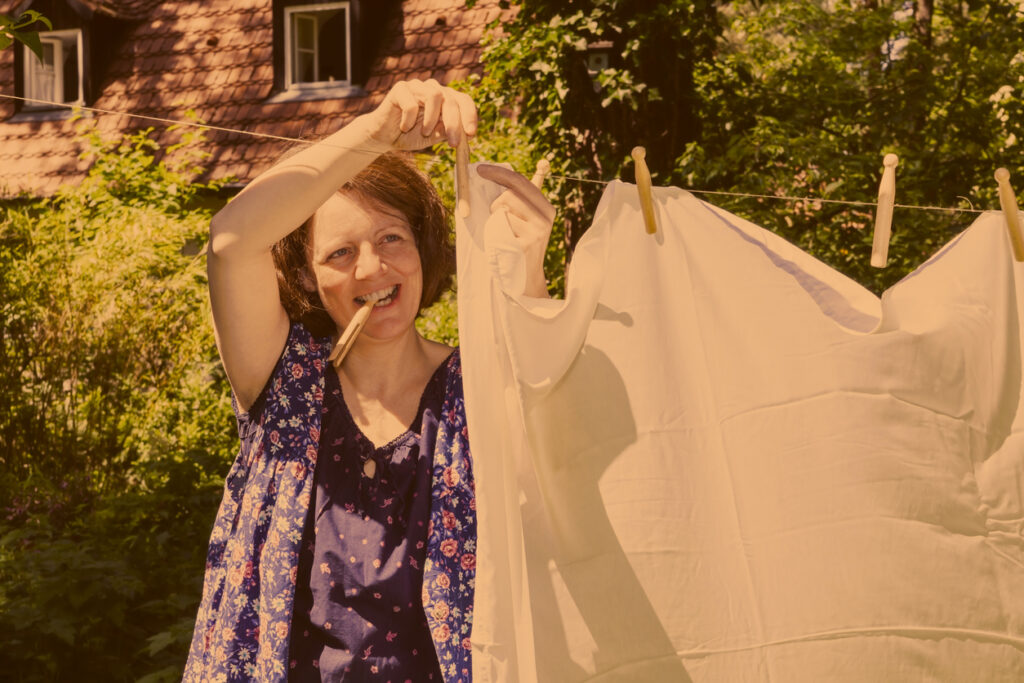
There was a time when the sight of laundry flapping in the breeze was a sign of a well-run home. Clotheslines stretched across backyards, apartment balconies, and even city rooftops, turning sunlight and fresh air into nature’s most efficient dryer. It wasn’t just about saving electricity—line-dried clothes lasted longer without the high heat of a machine breaking down fabric fibers. Towels smelled like the outdoors, and white sheets were naturally brightened by the sun instead of chemical-laden detergents.
Today, the convenience of electric dryers has nearly erased this once-common chore. While they save time, they also consume a massive amount of energy, contributing to carbon emissions and higher utility bills. Experts on sustainable living point out that line-drying is a simple yet powerful way to reduce household energy consumption. It’s also gentler on delicate fabrics, meaning fewer clothes end up in landfills due to premature wear and tear. Bringing back this forgotten habit wouldn’t just be a nod to nostalgia—it would be a small but meaningful step toward a more sustainable home.
2. Washing Dishes by Hand in a Basin
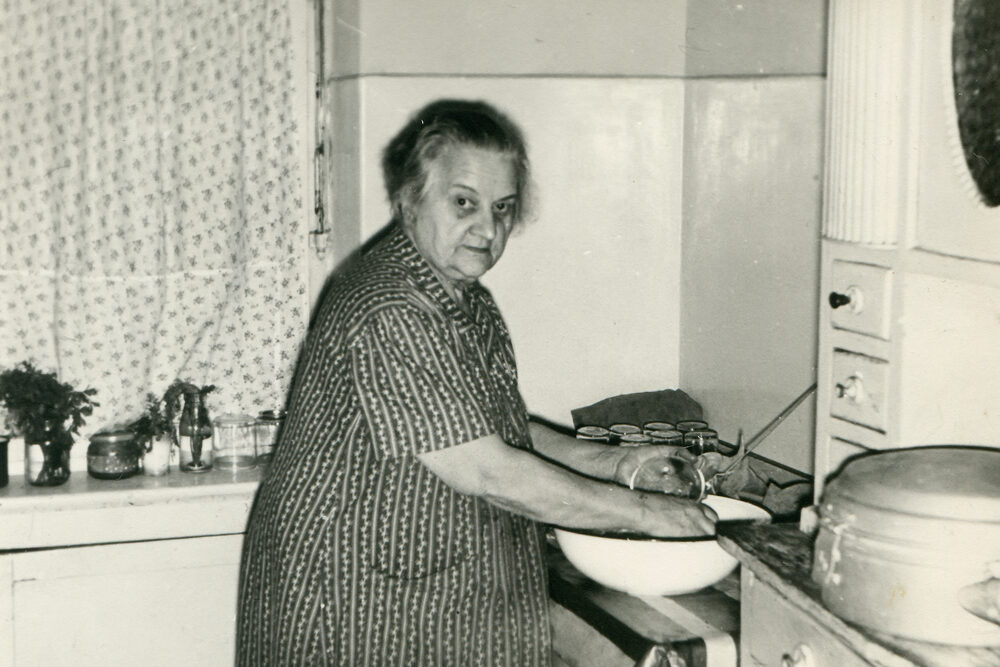
Before dishwashers became a kitchen staple, washing dishes was a hands-on task that brought people together. Families would gather at the sink, one person scrubbing while another dried, turning it into a social routine. More importantly, most people didn’t leave the tap running endlessly—they used a basin filled with soapy water, carefully rinsing each dish with just the right amount of water. This method conserved gallons of water compared to modern dishwashers or the all-too-common habit of letting the faucet flow nonstop.
While today’s energy-efficient dishwashers use less water than old models, the reality is that many households don’t load them properly or run them only half full, wasting both water and energy. Experts in water conservation argue that mindful hand-washing, done the old-fashioned way, can be just as eco-friendly—especially for smaller households that don’t generate enough dishes to justify a full dishwasher cycle. Plus, skipping the machine means no microplastic pollution from synthetic scrubbers or detergent pods, making it an even greener choice.
3. Sweeping Instead of Vacuuming
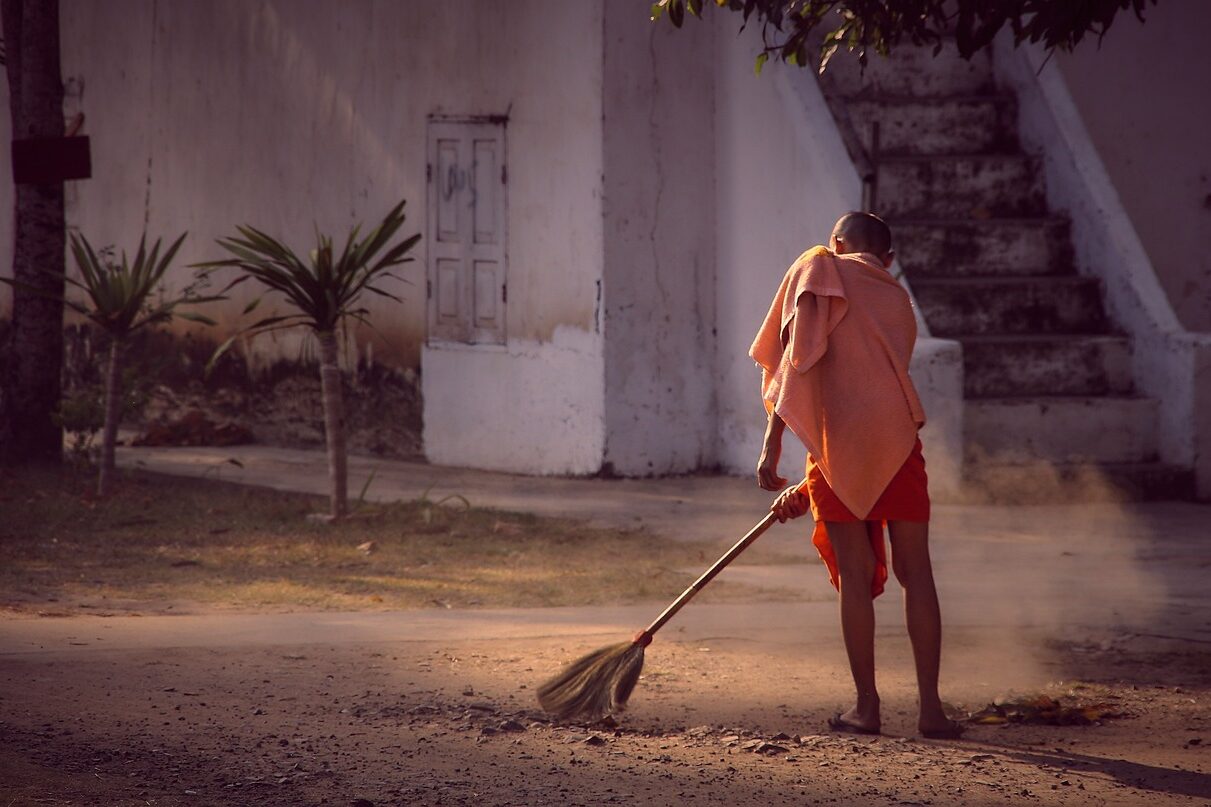
There was a time when brooms weren’t just decorative farmhouse accents—they were essential household tools. Sweeping the floors was a daily ritual, keeping dirt and dust at bay without any need for electricity. It was a quieter, gentler way to clean, and it didn’t come with the carbon footprint of modern vacuum cleaners. Back then, people relied on sturdy, long-lasting brooms made of natural materials like straw or corn husks, not plastic-heavy vacuum cleaners that need frequent replacements or expensive filters.
While vacuums are effective, especially for carpets, they consume a surprising amount of energy and often release dust and allergens back into the air. Environmental experts suggest that sweeping, when done correctly, can be just as effective in maintaining clean floors without the noise pollution or electricity use. Plus, it’s a bit of a workout—something that past generations embraced as part of daily movement. Bringing back the broom as a primary cleaning tool wouldn’t just save energy; it would reconnect people with simpler, more sustainable cleaning habits.
4. Mending Clothes Instead of Buying New

Once upon a time, a small hole in a sock or a missing button didn’t mean tossing an item in the trash. People knew how to sew, patch, and darn their clothes, extending the life of their favorite garments by years. Sewing kits were household essentials, and “make do and mend” wasn’t just a saying—it was a mindset. Clothes were made to last, with quality materials and craftsmanship, unlike today’s fast fashion that falls apart after a few washes.
Sustainability advocates argue that reviving these lost skills could drastically cut down on textile waste. The fashion industry is one of the biggest global polluters, and the constant cycle of buying and discarding clothes only makes things worse. Learning basic sewing skills—like fixing a tear, replacing a zipper, or even repurposing old fabric into new designs—would mean fewer clothes ending up in landfills. Plus, there’s a certain satisfaction in repairing something with your own hands, making it feel even more valuable.
5. Using Cloth Napkins Instead of Paper Ones

There was a time when every household had a drawer full of neatly folded cloth napkins. They were used for every meal, carefully laundered, and reused rather than tossed away after a single use. Unlike today’s paper napkins and disposable wipes, cloth napkins weren’t seen as a luxury or a special-occasion item—they were just a normal part of dining. Families had sets for everyday meals and nicer ones for guests, reducing the need for wasteful paper products that contribute to deforestation and landfill buildup.
Now, paper napkins and disposable kitchen towels have taken over, filling grocery carts and kitchen counters. They’re convenient, but they also require massive amounts of water, trees, and energy to produce, not to mention the plastic packaging they often come in. Environmental advocates suggest that switching back to cloth napkins, even just for home use, can significantly cut down on waste. They’re easy to wash, last for years, and add a touch of old-school charm to any table. Plus, they make meals feel a little more special, even if it’s just takeout at the kitchen counter.
6. Growing Herbs and Vegetables at Home
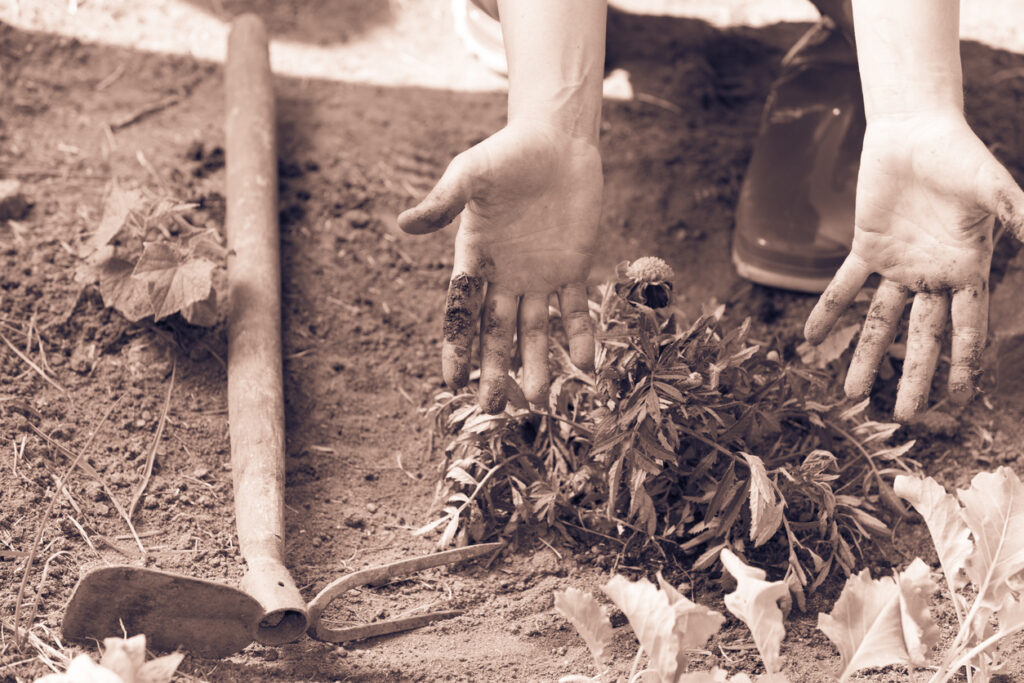
Not long ago, having a backyard garden or even a few pots of herbs on the windowsill was the norm. People grew what they could—tomatoes, lettuce, basil, and mint—reducing their reliance on store-bought produce that traveled thousands of miles before reaching their plates. Food scraps were often composted instead of thrown away, creating a natural cycle of nourishment for the soil. This small-scale gardening didn’t just save money; it cut down on packaging waste, pesticide use, and the carbon footprint of industrial agriculture.
Today, many people rely entirely on grocery stores for fresh produce, often without realizing how simple it is to grow a few essentials at home. Experts in sustainability argue that even a small herb garden can make a difference, reducing plastic waste from store packaging and lowering demand for mass-farmed products. Plus, homegrown produce is fresher, tastier, and free from harmful chemicals. Bringing back this lost habit would mean more sustainable meals, a deeper appreciation for food, and a little extra greenery in everyday life.
7. Making Homemade Cleaning Products
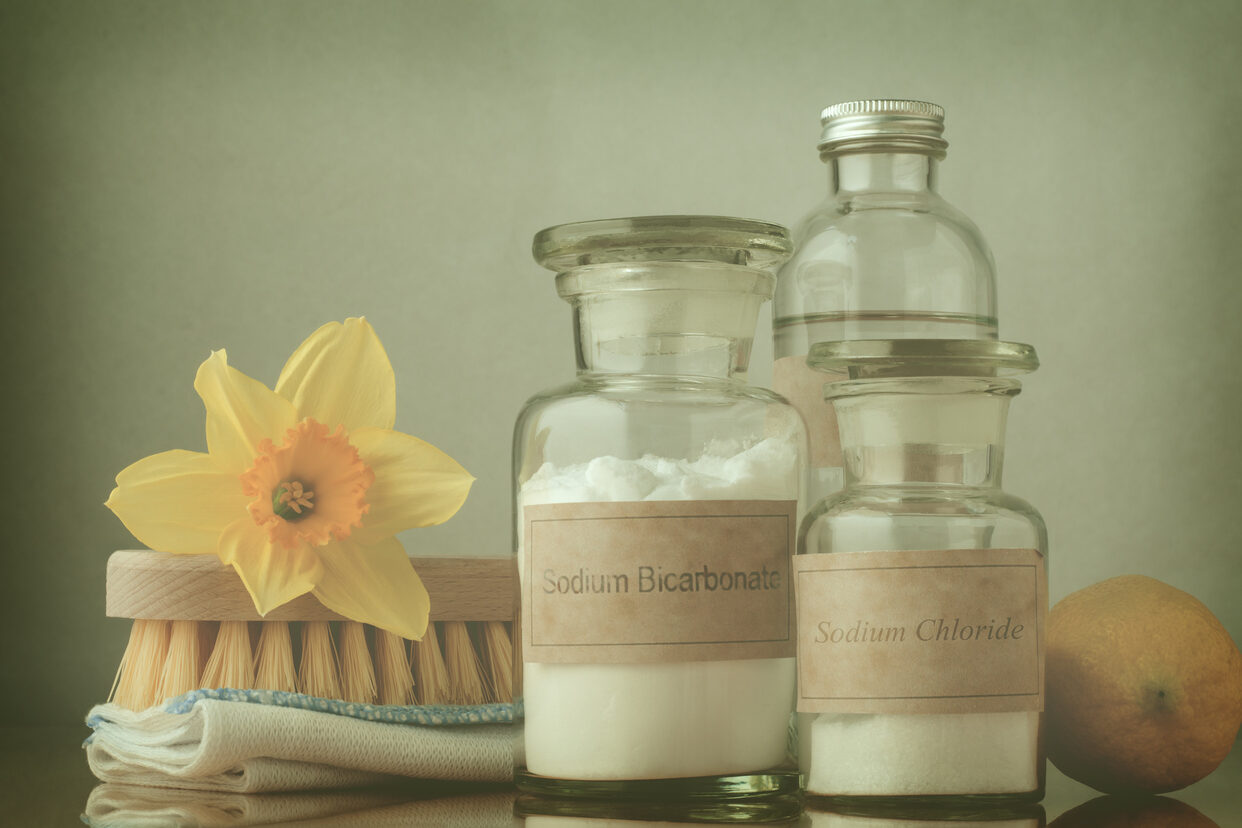
Before store shelves were lined with colorful bottles of cleaning sprays, most households relied on simple, homemade solutions. Vinegar, baking soda, and lemon juice were the go-to ingredients for disinfecting and deodorizing surfaces. These natural cleaners worked just as well—sometimes even better—than today’s chemical-heavy alternatives, without polluting the air or waterways. Kitchens didn’t smell like artificial “ocean breeze” or “lavender mist”—they smelled clean, naturally.
Nowadays, mass-produced cleaning products contribute to plastic waste, indoor air pollution, and chemical runoff. Environmental experts point out that returning to homemade cleaners can significantly cut down on harmful toxins while reducing plastic bottle consumption. It’s also cheaper and just as effective for everyday cleaning. Reviving this forgotten habit wouldn’t just be a win for the environment—it would also mean healthier homes, fewer allergic reactions, and a simpler, more sustainable approach to cleanliness.
8. Refilling Glass Bottles Instead of Buying Plastic
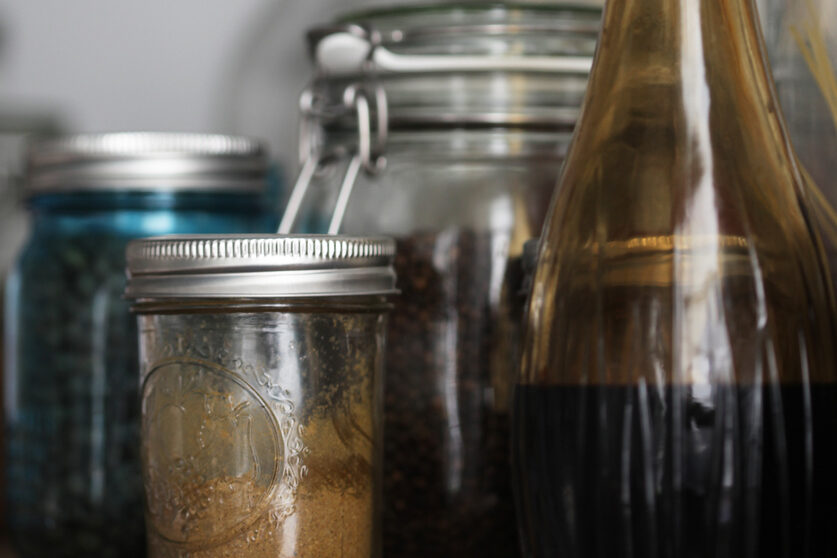
Before single-use plastic bottles became the norm, most households relied on glass containers for milk, soda, and even household cleaners. Glass bottles were returned, cleaned, and reused rather than tossed in the trash. The concept of waste was different back then—people didn’t throw things away so easily, and businesses designed packaging to last. Grocery stores and dairies even had bottle deposit systems that encouraged customers to bring back empties in exchange for a discount on their next purchase.
Fast-forward to today, and disposable plastic has taken over. The convenience of grab-and-go water bottles, pre-packaged drinks, and individually wrapped everything has led to an environmental crisis. Experts in waste management argue that bringing back the habit of refilling and reusing bottles—even if it’s just with a reusable water bottle at home—could dramatically cut down on plastic pollution. It’s a small switch with a big impact, helping to reduce the 60 million plastic bottles that end up in landfills and oceans every single day.
9. Using Bar Soap Instead of Liquid Soap

For generations, bar soap was the standard for washing hands, bodies, and even dishes. It lasted longer, came in simple paper packaging, and contained fewer synthetic ingredients. People didn’t think twice about lathering up with a bar of soap—it was just what you used. There were no plastic pumps to throw away, no fancy scents claiming to smell like “tropical waterfalls,” just good, old-fashioned cleanliness.
Today, liquid soap and body washes dominate the market, often packaged in bulky plastic bottles that contribute to environmental waste. These products also tend to contain unnecessary chemicals, artificial fragrances, and preservatives. Sustainability experts suggest that switching back to bar soap can make a big difference in reducing plastic waste and unnecessary water usage in production. Plus, handmade and all-natural bar soaps are making a comeback, offering just as many luxurious scents and skin benefits without the environmental guilt.


